For two years now, solar stations have been a resounding success, invading patios and gardens. It must be said that, in addition to its reduced environmental impact and its potential for producing clean electricity, solar energy can significantly reduce electricity bills, as we've seen through tests of stations from Sunology, Beem, Sunethic, A+ Energies, and others. But to take full advantage of this free resource, it's essential to adjust the tilt of the solar panels according to the seasons. Indeed, the sun's altitude varies considerably between summer and winter. This is why most manufacturers offer an adjustable tilt system on their solar stations. However, it must be used correctly and at the right time. Let's examine how the tilt of solar panels can be optimized to maximize electricity production throughout the year. Solar Panel Tilt According to the Seasons The orientation of solar panels plays a crucial role in electricity production. The goal is to maximize exposure to the sun's rays by adjusting the angle and direction of the panels. The optimal orientation varies depending on latitude and season. For example, the sun is very high in summer and very low in winter. Knowing that for optimal production, the sun's rays should be at a 90° angle to the surface of the photovoltaic panel, it is obvious that production will not be optimal throughout the year if the panels are left in the same position. There are therefore three main positions: summer, winter, and the transitional periods of fall/spring.Sun Orientation Throughout the Year Solar Panel Tilt for SummerDuring the summer, when the sun is higher in the sky, it is best to tilt the solar panels at a flatter angle relative to the horizon. This allows for maximum sunlight capture and increased electricity production. Generally, for regions in the Northern Hemisphere, the optimal tilt angle is between 20 and 30 degrees relative to the horizon. On our solar stations, this is the lowest position, placing the station almost horizontal (here 27° on a Sunology model):Solar Panel Tilt for Winter During the winter, the sun is much lower in the sky, requiring a different tilt of the solar panels. To maximize electricity production during this season, it is recommended to tilt the solar panels at a steeper angle relative to the horizon. The optimal angle generally varies between 40 and 50 degrees from the horizon in regions of the Northern Hemisphere. On our solar stations, this is the highest position, at 42° here:If you have a bifacial panel, as seen here on the
Sunology Play Recto Verso
, this position will also be more conducive to bifacial panels and will help compensate for some of the loss of production due to the season.

In spring and fall, when the sun is at an intermediate height in the sky, the solar panels should be tilted at a medium angle relative to the horizon. In regions of the Northern Hemisphere, a tilt angle of approximately 30 to 40 degrees is recommended to optimize electricity production during these seasons.
On our solar stations, this is the intermediate position (35° here):
Please note: these tilts also depend on whether the solar station is ground-mounted or wall-mounted. Sunology provides a comparison of production on its website based on orientation and angle, for ground-mounted installation:
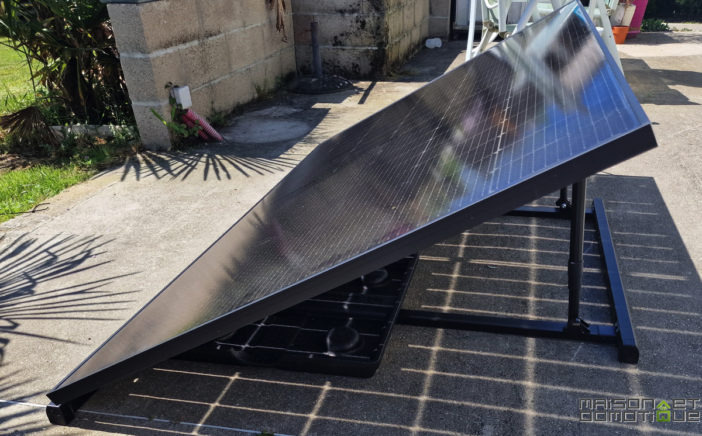
Orientation for ground-mounted installation
Or for wall-mounted installation:
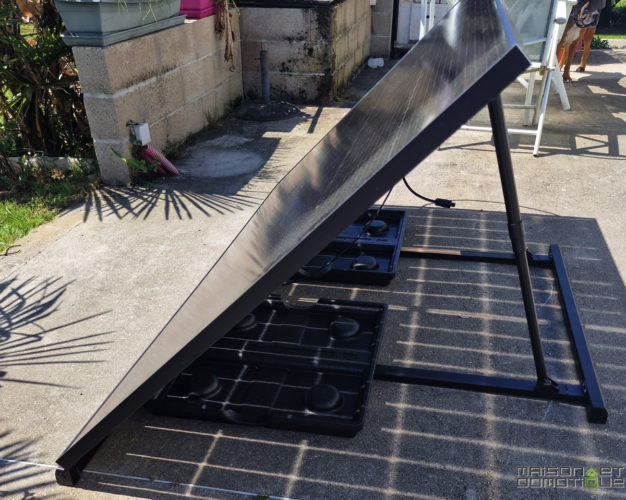
Orientation for wall-mounted installation This information applies regardless of the manufacturer.Note that some mounts offer two or three positions by default, such as Sunology, for example. Other solutions, such as Sunethic, allow you to adjust the tilt of the solar panels to the nearest degree, as desired, thus providing a greater range of adjustments.
Directional Orientation of Solar Panels
In addition to the tilt angle, the directional orientation of the solar panels is also important. In the northern hemisphere, it is preferable to face south for maximum sun exposure throughout the year. In France, the optimal orientation is obviously south. But for regions in the southern hemisphere, the optimal direction would be north.
This south-facing orientation, however, requires some qualification. Indeed, if you have several solar panels, you will experience a peak in production in the middle of the day, when the sun is at its zenith, which may not be fully consumed by the home. Part of the electricity produced could then be fed back into the general grid to supply neighbors. Since this injection is free (in the case of solar stations, EDF does not buy it from us), this use is not optimal and will increase the panels' payback time.

South-facing exposure
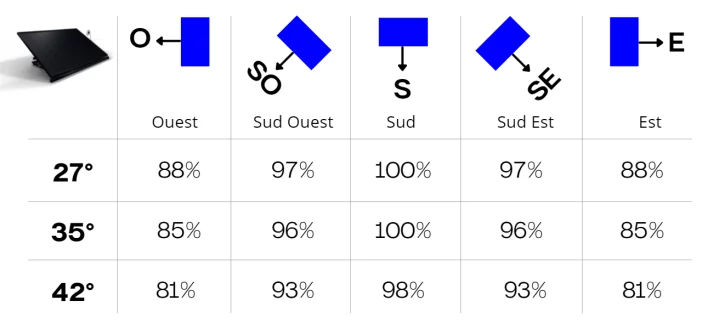
One panel faces south (blue), the other southwest (green).
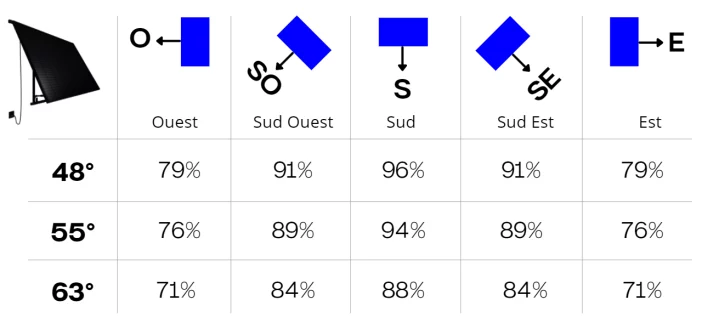
There is a small, inexpensive accessory that allows you to correctly align and tilt your solar panel: simply place it on the panel and check that the shadow is in the center.
While this alignment device is practical, you can also simply use a fairly tall plastic cap, such as a WD40 cap, spray paint, or even a tube of fly swatter. When the sun is at its zenith, place the cap on the solar panel. If there's a shadow in the cap, the orientation is incorrect:
Shadow in the cap, the alignment is incorrect!
When there's no more shadow in the center of the cap, the panel is perfectly aligned!

This is a simple and effective way to perfectly position your solar panel!
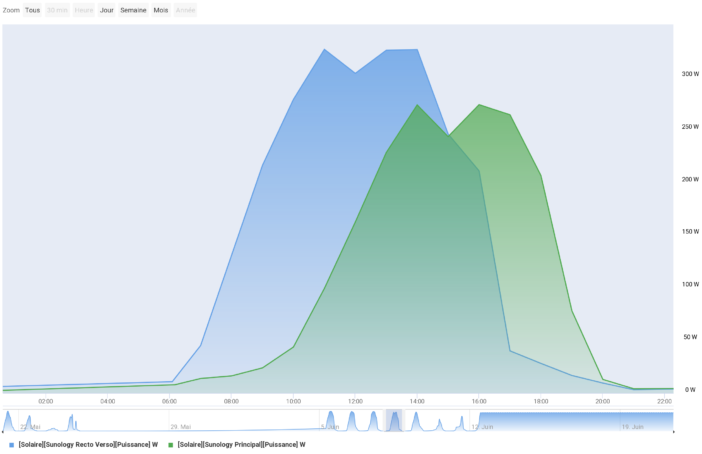
Tilting solar panels according to the seasons is essential to maximizing solar electricity production. By adjusting the tilt angle and direction of the panels, it's possible to efficiently capture available solar energy throughout the year. This not only maximizes the efficiency of solar installations, but also allows you to take full advantage of this clean and sustainable renewable energy source. By following these orientation principles, you can optimize your electricity production, contribute to the transition to more sustainable energy, and, of course, reduce your electricity bill!
It's therefore an option you shouldn't hesitate to take advantage of: because they can be tilted at will, solar stations provide greater productivity than roof-mounted panels, which remain fixed all year round, and therefore don't always produce optimal amounts of electricity. You know what you have to do! If you still don't have a solar station, you can still take advantage of our special offers:
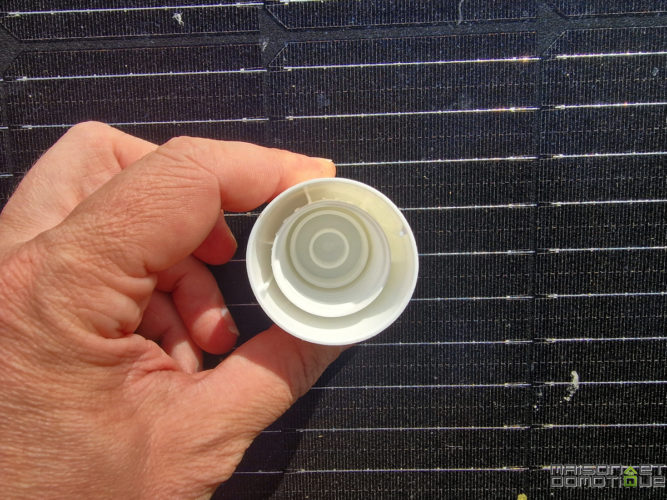
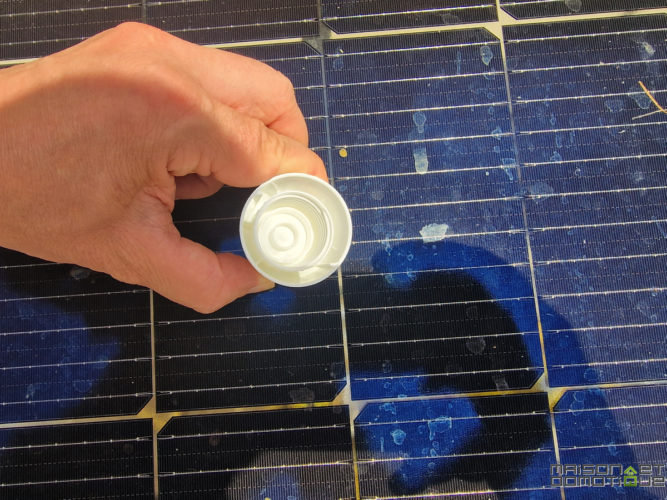

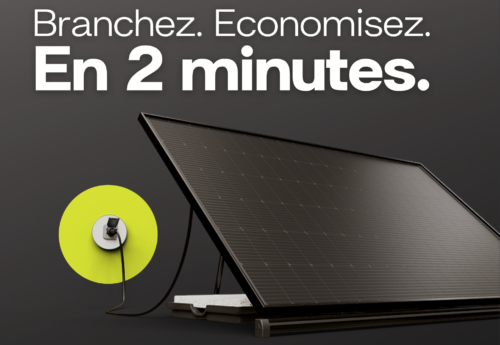







Please remain courteous: a hello and a thank you cost nothing! We're here to exchange ideas in a constructive way. Trolls will be deleted.